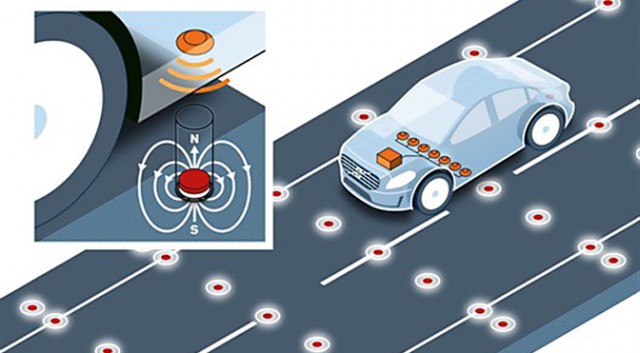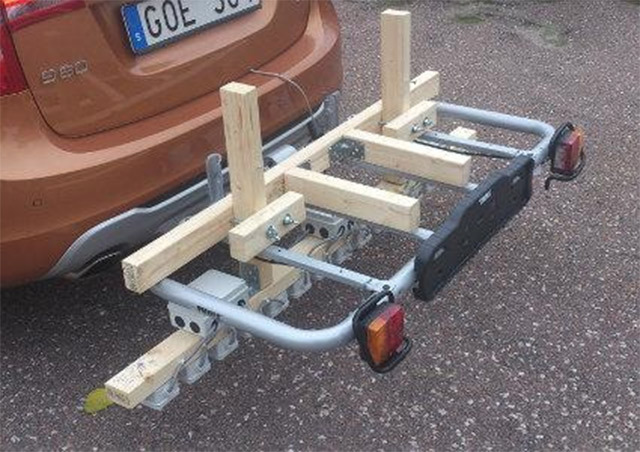Volvo proposes to modify the roadbed for unmanned vehicles

There are different views on how unmanned vehicles should work. For example, Google nashpigovyvaet their sensors and radars to recognize the markings and road signs. The problem is that such an approach is too expensive: for example, Google machines have installed additional equipment worth $ 150,000. Maybe it’s more logical to modify not every car, but to create a new infrastructure that is understandable for cheap electronics?
Volvo offers a radically new approach: to introduce magnets into the roadway . To test the technology, the company equipped with magnets a 100-meter section of the racetrack in Hallered (Sweden) and launched specially modified S60 unmanned sedans.
The experiment showed that even relatively simple and cheap magnetic sensors are able to confidently detect magnets in the roadway at vehicle speeds of up to 145 km / h (the experiment used ferrite magnets of 40x15 mm at a depth of 200 mm below the asphalt surface).
')
Volvo engineers calculated that for confident movement in the middle of a strip, a car needs to read 400 readings of magnetic sensors per second, while ordinary sensors read only 3 readings per second. Therefore, for the experiment, a setup with five modules was used, on each of which 15 pads with Honeywell sensors were installed. Collectively, they delivered 500 reads per second.

At a speed of 72 km / h, a cheap grille worth $ 109 positioned the car with an accuracy of 10 cm.
According to Volvo, the addition of such magnets at the stage of laying asphalt costs only $ 24,405 per kilometer of two-lane road. If the calculations are correct, then it is more profitable than installing markup recognition systems for each car. Especially considering the overall benefit to the global economy from the introduction of unmanned vehicles, which, for example, Morgan Stanley experts estimate at $ 5.6 trillion annually.
Source: https://habr.com/ru/post/216311/
All Articles